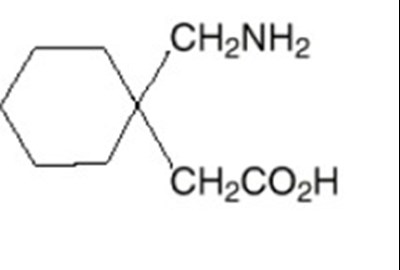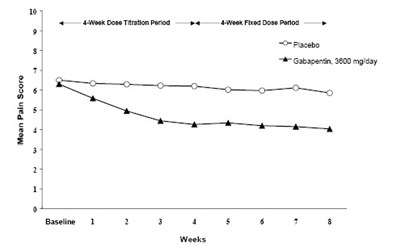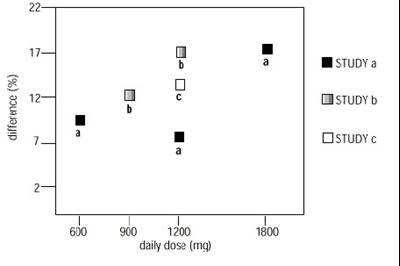Product Images Gabapentin
View Photos of Packaging, Labels & Appearance
- image description - New Doc 2017 02 06 (3)
- image - d3fd11fe 4d3f 4002 8f9e 42cc12b4252d 01
- image - d3fd11fe 4d3f 4002 8f9e 42cc12b4252d 02
- image - d3fd11fe 4d3f 4002 8f9e 42cc12b4252d 03
- image - d3fd11fe 4d3f 4002 8f9e 42cc12b4252d 04
- image - d3fd11fe 4d3f 4002 8f9e 42cc12b4252d 05
- image - d3fd11fe 4d3f 4002 8f9e 42cc12b4252d 06
- image - d3fd11fe 4d3f 4002 8f9e 42cc12b4252d 07
- image - d3fd11fe 4d3f 4002 8f9e 42cc12b4252d 08
- image - d3fd11fe 4d3f 4002 8f9e 42cc12b4252d 09
- image - d3fd11fe 4d3f 4002 8f9e 42cc12b4252d 10
- image - d3fd11fe 4d3f 4002 8f9e 42cc12b4252d 11
- image - d3fd11fe 4d3f 4002 8f9e 42cc12b4252d 12
Product Label Images
The following 13 images provide visual information about the product associated with Gabapentin NDC 55700-483 by Lake Erie Medical Dba Quality Care Products Llc, such as packaging, labeling, and the appearance of the drug itself. This resource could be helpful for medical professionals, pharmacists, and patients seeking to verify medication information and ensure they have the correct product.
image description - New Doc 2017 02 06 (3)
.jpg)
This is a description of a medication named Gabapentin in capsule form. Each capsule contains 100mg of Gabapentin. The medication is manufactured by Cipla USA, Inc. and further produced by Ascent Pharmaceuticals Inc. It comes in a bottle of 120 capsules. The package is marked with a GTIN code of 00355700483012 and NDC code of 55700-0483-01. The capsules are white with the identification code 1G321 E75K[E]. The label warns to keep it out of the reach of children. It shall be stored at a temperature range of 68 to 77 Fahrenheit. For details, consult with a physician, and refer to the manufacturer's insert. The other information such as Serial, Lot, and EXP date are not provided.*
image - d3fd11fe 4d3f 4002 8f9e 42cc12b4252d 01

This is a table that provides dosage instructions for Gabapentin based on renal function and creatinine clearance. The dosage regimen varies from 300 mg/day to 30000 mg/day depending on the patient's renal function. For patients with creatinine clearance below 15 mL/min, the daily dose should be reduced in proportion to the clearance. Hemodialysis patients should receive maintenance doses based on creatinine clearance and a supplemental post-hemodialysis dose after each 4 hours of treatment. The table also includes abbreviations for dosing frequency: TID for three times a day, BID for two times a day, and QD for a single daily dose.*
image - d3fd11fe 4d3f 4002 8f9e 42cc12b4252d 03

This is a table showing the risk of events associated with antiepileptic drugs in different indications (epilepsy, psychiatric or others) compared to placebo. The table displays the number of events per 1000 patients for both placebo patients and patients taking antiepileptic drugs. It also shows the relative risk and the additional drug patients with events per 1000 patients. No further information is available.*
image - d3fd11fe 4d3f 4002 8f9e 42cc12b4252d 04

This is a table that shows the adverse reactions in pooled placebo-controlled trials in Postherpetic Neuralgia. It compares the adverse reactions between Gabapentin and Placebo, indicating the number and percentage of participants who experienced each one. Adverse reactions are categorized by body systems, including body as a whole, digestive system, metabolic and nutritional disorders, nervous system, respiratory system, and special senses. Adverse reactions reported in the Gabapentin group include asthenia, infection, accidental injury, diarrhea, dry mouth, constipation, nausea, vomiting, peripheral edema, weight gain, hyperglycemia, dizziness, somnolence, ataxia, abnormal thinking and gait, incoordination, pharyngitis, amblyopia, conjunctivitis, diplopia, otitis media. Blurred vision is reported under Amblyopia.*
image - d3fd11fe 4d3f 4002 8f9e 42cc12b4252d 05

This is a table showing the adverse reactions in pooled placebo-controlled add-on trials in epilepsy patients aged 12 years and older for Gabapentin and Placebo. Adverse reactions reported for Gabapentin include fatigue, increased weight, back pain, peripheral edema, vasodilation, dyspepsia, dry mouth or throat, constipation, dental abnormalities, somnolence, dizziness, ataxia, nystagmus, tremor, dysarthria, amnesia, depression, abnormal thinking, abnormal coordination, pharyngitis, coughing, abrasion, impotence, diplopia and amblyopia. Blurred vision was often described as amblyopia. The adverse reactions reported for Placebo are not provided.*
image - d3fd11fe 4d3f 4002 8f9e 42cc12b4252d 06

This is a table presenting various adverse reactions reported in a placebo-controlled add-on trial involving Gabapentin administered to pediatric epilepsy patients aged between 3 to 12 years old. The table shows the percentage of patients affected, split by the reaction they experienced, for both Gabapentin (N=110) and placebo (N=128) treatments. Adverse reactions reported include body aches, viral infection, fever, increased weight, fatigue, nausea, vomiting, nervous system symptoms (such as somnolence, dizziness, and hyperkinesia), respiratory infections, among others. Background antiepileptic drug therapy was also administered.*
image - d3fd11fe 4d3f 4002 8f9e 42cc12b4252d 08

The text describes dosages, duration, and number of patients involved in two controlled PHN studies using Gabapentin as treatment. Study 1 lasted for 8 weeks, used a target dose of 3600mg/day, and involved 113 patients receiving Gabapentin and 116 receiving Placebo. Study 2 lasted for 7 weeks, used a target dose of either 1800mg/day or 2400mg/day, and involved 223 patients receiving Gabapentin and 11 receiving Placebo. The total number of patients across both studies was 227. The dosage was given in three divided doses (TID).*
image - d3fd11fe 4d3f 4002 8f9e 42cc12b4252d 11

The text describes the results of controlled studies on PHN (postherpetic neuralgia) patients, showing the proportion of responders who experienced a reduction in pain score of over 50% at the endpoint. The figure shows that in Study 1, 34% of the patients were responders, while in Study 2, the proportion of responders was not available due to unreadable characters. The significance level for both studies was p<0.001. Additionally, the drug dosages for the studies are mentioned at the end of the text.*
* The product label images have been analyzed using a combination of traditional computing and machine learning techniques. It should be noted that the descriptions provided may not be entirely accurate as they are experimental in nature. Use the information in this page at your own discretion and risk.




